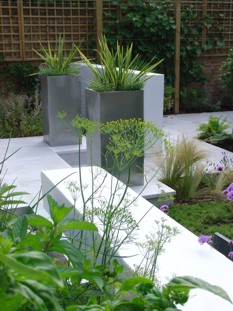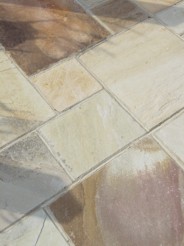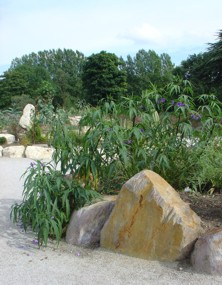Natural Stone
Natural beauty as old as the hills
Natural stone has been used in landscape applications for literally thousands of years. Man has traditionally worked the local stone extracted from the landscape around him although with modern day global trade now bringing down prices its possible to make natural stone a first choice for any new garden.
When choosing natural stone as a paving or walling material for a new garden, the selection must be made according to where the material is going to be introduced and how the colours and textures will work with the rest of the property. Different finishes in paving such as bush hammered, honed or flame textured provide varying degrees of slip resistance, so choose carefully according to where the stone is to be used.
There are colours and hues of stone to match almost any application from blue slate to red granite in numerous shades and tones in between so aim to compliment the colours of surrounding house walls or other brickwork. By mixing complimentary tones of different stone types it’s possible to create really individual spaces which reflect your own character.
Natural stone is durable and has a beauty which is unmatched by manufactured products. Every single part of it is unique. Natural stone has character quite literally by the ton, its individual personality formed by incomprehensible geological processes. It’s the range of contrasts in a single piece of stone that make it so special.
Often misperceived as expensive, natural stone can be surprisingly cost effective. Whilst it is true that initial costs of natural paving are sometimes, although not always, higher than their man-made concrete equivalents, there are several important aspects of natural stone which add up to make it a lower cost solution in the long term.
Primarily, natural stone lasts a lot longer than comparative manufactured materials. Natural paving can last as much as five times longer than concrete, meaning less labour and replacement materials required over the life of the product. That all adds up to huge savings for the environment and the owner of the garden.



Natural stone also has one critical element not commonly shared by manufactured materials. Like a fine wine it has the ability to get better with age. That can’t always be said of concrete paving which tends to lose its colour and texture as it degrades under the pressures of wear and exposure to the outdoor elements. Natural stone on the other hand is literally borne of the outdoor landscape in the first place so the effects of weather are far less of a problem.
Knowing how to make the right choice of stone takes time to learn and patience to understand. It’s an intimately tactile material which almost demands to be touched and experienced. Courtyards can be made to glow with the warmth of Porphyry setts, whilst contemporary chic can be achieved with hard wearing forms of white granite. The colour and textures you choose will be determined by the atmosphere you wish to create and the practicality of the material for that particular space.
Buying natural stone is a straight forward process providing you make your selection from one of the main, reputable suppliers. Be wary of ‘too good to be true’ prices offered by some suppliers, especially in relation to the increasingly popular Indian sandstone. Stone from some companies is very occasionally extracted from quarries abroad which care little about child labour and health and safety issues, which can be reflected in their ridiculously low prices.
Closer to home, if you’re looking to achieve a truly Kentish feel there are several traditional, locally sourced choices including the warm coloured Ragstone and the unmistakable black and white tones of knapped flint both of which make excellent materials for garden walls. Reclaimed stone is perfect for instilling timeless character into a garden and you have the satisfaction of knowing that you’re having little effect on the environment by recycling a piece of history. In an age of throwaway consumables, natural stone really is an intelligent choice for a new garden.
Buying natural stone:
- Select from a reputable supplier
- Consider textures for different applications
- Think about colour in relation to the property
- Choose local or reclaimed if appropriate for the scheme
- Try a sample before you buy in bulk